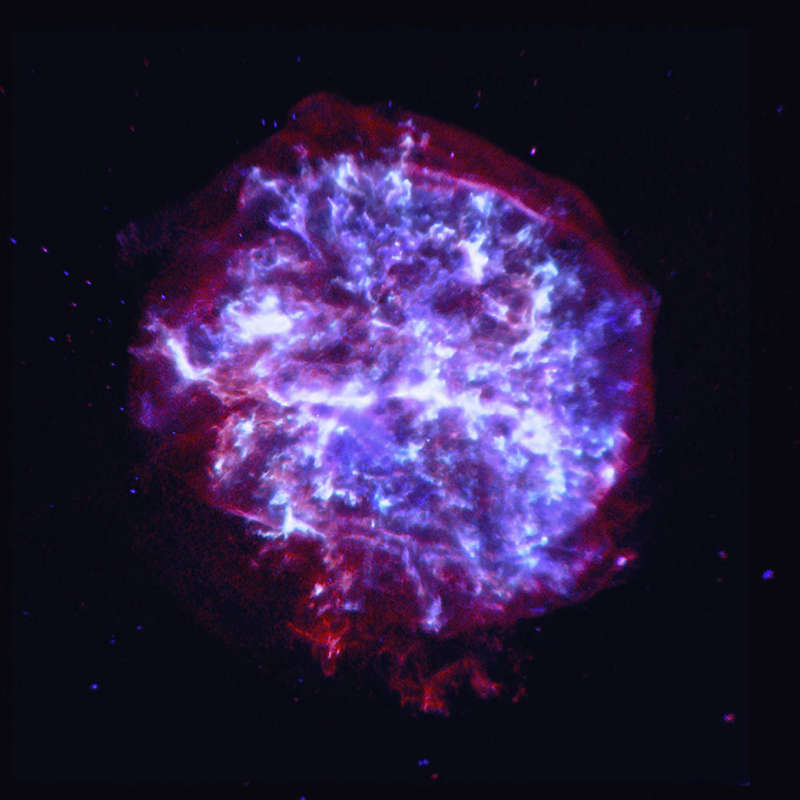
|
Credit & Copyright:
NASA/CXC/SAO
Explanation:
Massive stars spend their brief lives furiously burning nuclear fuel.
Through fusion
at extreme temperatures and densities surrounding the
stellar core, nuclei of light elements
ike Hydrogen and Helium are
combined to heavier
elements like
Carbon, Oxygen, etc. in a progression which ends with Iron.
So a supernova explosion,
a massive star's inevitable and spectacular demise,
blasts back into space debris
enriched in
heavier elements to be incorporated into other stars and planets and
people).
This detailed false-color x-ray image
from the orbiting Chandra Observatory shows such a hot, expanding stellar
debris cloud about 36 light-years across.
Cataloged as
G292.0+1.8,
this young supernova remnant is about 20,000
light-years distant toward the southern constellation Centaurus.
Light from the inital supernova explosion reached Earth
an estimated 1,600 years ago.
Bluish colors highlight filaments of the mulitmillion degree gas
which are exceptionally
rich in Oxygen, Neon, and Magnesium.
This enriching supernova also produced a pulsar in
its aftermath, a rotating neutron star remnant of the collapsed stellar
core.
The stunning image was released as part of the 20th anniversary
celebration of
the
Chandra X-ray Observatory.
|
January February March April May June July August September October November December |
| ||||||||||||||||||||||||||||||||||||||||||||||||
NASA Web Site Statements, Warnings, and Disclaimers
NASA Official: Jay Norris. Specific rights apply.
A service of: LHEA at NASA / GSFC
& Michigan Tech. U.
Based on Astronomy Picture
Of the Day
Publications with keywords: nucleosynthesis - supernova remnant
Publications with words: nucleosynthesis - supernova remnant
See also:
- APOD: 2025 October 1 Á NGC 6960: The Witchs Broom Nebula
- APOD: 2025 June 9 Á Between Scylla and Charybdis: A Double Cosmic Discovery
- Supernova Remnant Cassiopeia A
- APOD: 2025 January 8 Á Supernova Remnants Big and Small
- APOD: 2024 September 18 Á The Mermaid Nebula Supernova Remnant
- APOD: 2024 April 16 Á Filaments of the Vela Supernova Remnant
- APOD: 2024 April 3 Á Unusual Nebula Pa 30
